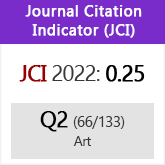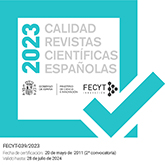The Trace of Guglielmo Della Porta on Ivory Works in Spain. The Roman and Buen Retiro Workshops of the Pozzos and an Observation on that of Saint Claude in the Franche Comté
DOI:
https://doi.org/10.3989/aearte.2015.15Keywords:
Ivory sculpture, Guglielmo Della Porta, Jacob Cornelisz Cobaert, Cope, Nicolás Piper or Nicolás de Arras, Pippi, Giovanni Battista & Andrea Pozzo, The Rosset, Collecting in SpainAbstract
The author analyzes the reverberations of the compositions of Guglielmo Della Porta on different ivory works located in Spain of varying chronology and their possible attributions to his known disciplues or contemporaries who worked in ivory, such as Jacob Cornelisz Cobaert, called Cope, or Nicolás Piper de Arras called Pippi. The diffusion of Guglielmo’s models in the workshop of Giovanni Battista del Pozzo during the 18th century is known. Giovanni was the father of Andrea del Pozzo, Director of the Spanish ivory workshop in the Buen Retiro, and so other works are analyzed in this context. Also included in this study are two small reliefs in a collection in Alicante, which originally belonged to a Via Crucis preserved in Boulogne sur Mer, here attributed to a Saint Claude workshop, given that stylistically they can be confused with Buen Retiro creations.
Downloads
References
Avery, Charles (2012): “Guglielmo Della Porta´s relationship with Michelangelo”. En: Coll-Cortés, Guglielmo Della Porta. A Counter-Reformation sculptor, pp. 114-137.
Baglione, Gio (1935): Le Vite dei Pittori . . . Del Pontificato de Gregorio XIII del 1572. In fino a tempi di Papa Urbano nel 1642. Roma.
Barberini, Maria Giulia (1989): “Cope scultore fiammingo ed un avorio di Casa Patrizi”. En: Per Carla Guglielmi. Scritti di allievi. Roma, 17-25.
Bartsch (1983): The Illustrated Bartsch, 38 (formerly 17, part 5). En: “Italian artists of the sixteenth century” (Edited by Sebastian Buffa). Nueva York: Abaris Book.
Bertolotti, Antonino (1884): Artisti subalpini in Roma nei secoli XV, XVI e XVII. Ricerche e Studi negli Archivi romani, Mantua.
Bertolotti, A. (1974 reimp.): Artisti belgi e olandesi a Roma nel secoli XVI-XVII. Roma 1885 (ed. en 1880).
Bertolotti, A. (1975): Artisti francesi in Roma nei secoli XV, XVI e XVII. Ricerche e Studi negli Archivi Romani. Ristampo dell edizione de Mantova 1886. Bolonia, Forni.
Bever, Geneviève (1946): Les “Tailleurs d´Yvoire” de la Renaissance au XIX siècle. Bruselas.
Blanco, Antonio / Lorente, Manuel (1969): Catálogo de la Escultura. Museo del Prado. Madrid.
Brune, L´abbé Paul (1912): Dictionnaire des artistas et ouvriers d´art de la Franche Comté. París.
Christie’s Fine English Furniture nº 24, Londres, 27 de noviembre de 1980.
Coll-Cortés (2012): Guglielmo Della Porta, a Counter-Reformation sculptor. Madrid.
Coppel, Rosario (2012): “Guglielmo Della Porta in Rom”. En: Coll-Cortés, Guglielmo Della Porta, a Counter-Reformation sculptor, Madrid, 28-113.
Díez, José Luis (1999): Vicente López (1772-1850) (Vol. I, Vida y obra). Madrid: Fundación de Apoyo a la Historia del Arte Hispánico.
Economopoulos, Harula (2013): Stefano Madernno, scultore. 1571ca. 1636; i maestri, la formazione, le opere giovanili. Roma: Gangemi.
Edwards, Ralph (1931): “Cabinets made for Horace Walpole and Thomas Brand”. En: Burlington Magazine, march, 128-131, figs. A y B.
Estella Marcos, Margarita Mercedes (1978): “Casita de EL Príncipe de El Escorial”. En: Reales Sitios, 3er trimestre, 57-64.
Estella Marcos, Margarita Mercedes (1984): La escultura Barroca de marfil en España. Las escuelas europeas y las coloniales, 2 vols. Madrid: CSIC.
Estella Marcos, Margarita Mercedes (1999): “La escultura de marfil en España”. En: Artes Decorativas, I. Summa Artis XV. Madrid, pp. 321-408.
Estella Marcos, Margarita Mercedes (2004): “La importación de escultura italiana. Obras en España del taller de los Della Porta, Giambologna y del Naccherino”. En: El modelo italiano en las Artes Plásticas de la Península Ibérica durante el Renacimiento. Valladolid: Universidad de Valladolid, pp. 423-454.
Estella Marcos, Margarita Mercedes (2012): “Guglielmo Della Porta: early years and some of his work in Spain”. En Coll-Cortés: Guglielmo Della Porta e Counter. Reformation sculptor, Madrid, pp. 114-26.
Extermann, Grégoire (2012): “Il ciclo della Passiones di Cristo di Guglielmo della Porta”. En: Scultura a Roma nella seconda metá del Cinquecento. Protagonisti e Problemi. (A Cura di Walter Cupperi, Grégoire Extermann, Giovanna Ioele). Roma: Universitá Roma, 3, pp. 59-112.
Dacos, Nicole / Meijer, Bert W. (commissaires) (1995): Fiamminghi a Roma. 1508-1608. Artisti des Pays Bas et de la Principauté de Liège à Rome à la Renaissance, Bruselas.
González-Palacios, Alvar (1979-1980): “Le arti decorativi e l´arredamento alla Corte di Napoli, 1734-1805”. En Civiltá del ´700 a Napoli, 1734-1799. 2 vol., Nápoles, diciembre-noviembre. 75-956, cat (avori) 541 a y b.
Gramberg, Werner (1960): “Guglielmo Della Porta. Coppe Fiammingo und Antonello da Faenza- Bemerkungen zu sechs Bronzereliefs mit Szenen aus Ovid Metamorphosis in Museumm für Kunst und Gewerbe Hamburg”. En: Jahrbuch der Hamburger Kunstsammlungen, 5, pp. 31-52.
Gramberg, Werner (1964): Die Düsseldorfer Skizzenbuch des Guglielmo Della Porta. 3 vols. Berlín.
Jordán de Urriés de la Colina, Javier (2009): La Real Casa del Labrador de Aranjuez. Patrimonio Nacional.
Junquera Mato, Juan José (1979): La decoración y el mobiliario de los Palacios de Carlos IV. Madrid.
Kappel, Jutta (1997): “Das Urteil des Paris. Ein Elfenbeinrelief aus dem Umkreis des Giovanni Battista Pozzo nach einer Vorlage von Guglielmo Della Port aim Grünen Gewölbe Dresden”. En: Weltkunst 15, febrero, pp. 280-284.
King, William (1926, reprint 1968): “A relic of Horace Walpole I The cabinet; Longhurst, Margareth. II The ivories. En: Burlington Magazine, enero-junio, pp. 128-129, figs. A-F. Les Rosset, un atelier jurassien aux temps des Lumières. Con estudio introductorio de Marie-Liesse Pierre. Dole: Musée des Beaux Arts de Dole. 24 nov. 2001-10 feb. 2002. Longhurst, Vid. King.
Malgouyres, Philippe (2010): Ivoires de la Renaissance et des temps moderns. La collection duj musée du Louvre. Milet, Ambroise (1904): Anciennes Industries scientifiques et artistiques dieppoises. París.
Morey, C.R. (1936): Gli oggetti d´avorio e di osso dei Musei Sacro Vaticano. Ciudad del Vaticano.
Pérez de Tudela, Almudena (2001): “Sobre pintura y pintores en El Escorial en el siglo XVI”. En: El Monasterio del Escorial y la Pintura, Madrid: Simposium.
Pérez de Tudela, Almudena (2007): “El papel de los embajadores españoles en Roma como agentes artísticos de Felipe II: los hermanos Luis de Requesens y Juan de Zúñiga (1563-1579)”. En: Hernando Sánchez, C. J. (coord.). Roma y España. Un crisol de la Cultura europea en la Edad Moderna. Actas del Congreso Internacional, Real Academia de España en Roma, vol. I, mayo. pp. 391-420.
Raggio, Olga (1983): Cat. 53 en The Vatican Collections. The Papcy and Art, Nueva York, Metropolitan Museum.
Ramos Frenda, Eva María (2009): “Las Duquesas de Parcent. Dos malagueñas en pos de la cultura y el arte”. En: Jábega, mayo-agosto.
Roma di Sisto V. Le Arti e la Cultura. (A cura di Maria Luisa Madonna). Roma, 1993, Sagrada Biblia. Edició Barcelona, Herder, 1960.
Schmidt, Eike D. (2008a): “Christ in the Counter-Reformation. A signed and dated ivory by Giovanni Antonio Gualterio”. En: Storia dell´Arte XIX, 119, 5-20.
Schmidt, Eike D. (2008 b): “Cardinal Ferdinando, Maria Maddalena of Austria and the early History of Ivory Sculpture at the Medici Court”. En: Collecting Sculpture in Early Modern Europe (a c. di N. Penny e E.D.Schmidt), Washington, pp. 159-183.
Schmidt, Eike D. (2013): Das Elfenbein der Medici. Münich, Hirmer Verlag.
Sotheby’s: Londres, 11 december 1988, nº 371; Nueva York, 17 de julio de 2000, nº 59.
Sotheby’s: Old Master sculpture and Works of Art, Londres, 10 de julio de 2014.
The Vatican Collections. The Papacy and art (1983): Nueva York. The Metropolitan Museum of Art.
Theurkauff, Christian (1984): Elfenbein. Sammlung Reiner Winkler I. Münich.
Theurkauff, Christian (1986): Nachmittelalterlicher Elfenbein. Die Bildwerke in Elfenbein des 16-19 Jahrhunderts. Berlín. Staatliche Museen Preussischer Kulturbesitz.
Theurkauff, Christian (1994): Elfenbein. Sammlung Reiner Winkler. Band II. (Mit Addenda and Corrigend zu Teil I), Satz.
Trusted, Marjorie (2013): Baroque and later ivories. Victoria and Albert Museum.
Downloads
Published
How to Cite
Issue
Section
License
Copyright (c) 2015 Consejo Superior de Investigaciones Científicas (CSIC)

This work is licensed under a Creative Commons Attribution 4.0 International License.
© CSIC. Manuscripts published in both the printed and online versions of this Journal are the property of Consejo Superior de Investigaciones Científicas, and quoting this source is a requirement for any partial or full reproduction.All contents of this electronic edition, except where otherwise noted, are distributed under a “Creative Commons Attribution 4.0 International” (CC BY 4.0) License. You may read here the basic information and the legal text of the license. The indication of the CC BY 4.0 License must be expressly stated in this way when necessary.
Self-archiving in repositories, personal webpages or similar, of any version other than the published by the Editor, is not allowed.















